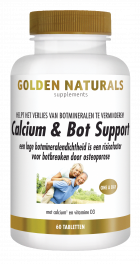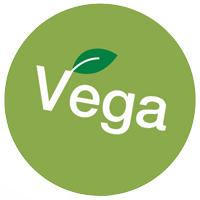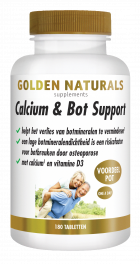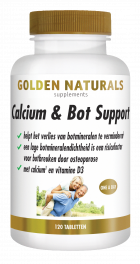Bone decalcification? Get moving (on time)!
- Oct 26, 2021
Did you know that in the Netherlands no less than one in four women and one in twelve men are affected by osteoporosis? In osteoporosis, the bone loses calcium, making it less strong. As soon as that calcium loss is so great that it even increases the risk of bone fractures, we speak of osteoporosis. This does not sound very pleasant, but luckily you can do the necessary yourself to reduce the risk of osteoporosis. Read on for our tips!
First of all, some facts: how does osteoporosis develop? Bone is constantly building and breaking down in our body. Until the 35 th year of life makes the body more bone than it breaks. We speak of osteoporosis when the breakdown of bone exceeds the production. In this way the bone becomes less and less strong. Over time, bone density can become so low that we speak of osteoporosis. Less stress on the bone system may also be a factor. Regular exercise is therefore very important!
Bone decalcification due to hormonal influences
A changing hormone balance seems to be the main cause of osteoporosis. The risk of osteoporosis is largely dependent on bone density around your 35th: low bone density at that age increases the risk significantly. From (average) the 50 th year of life, bone density decreases annually by about 1%. In women, this can increase to a decrease of 6% due to hormonal influences. This may sound daunting to you, but remember that these are averages. And you can start taking good care of your bones in time!
Holy combination
To prevent bone loss in later life as much as possible, it is important to ensure a strong bone structure in your younger years. Of course you can't control everything yourself, but there is a 'holy' combination with which you can minimize the risk of bone loss and osteoporosis. That combination consists of: regular exercise, a healthy and varied diet and supplements. Regular exercise, such as walking or cycling, puts stress on your bones. 'Tax' may sound heavy, but it is necessary! That load ensures a better bone metabolism, so that your body immediately gets to work on strengthening your bones. But for physical exertion, your body does need the right building materials.
Good food for your bones!
Healthy food with sufficient variety and fresh vegetables generally provides sufficient nutrients for your body and bones. For people with weaker bones, extra attention to certain building materials is definitely recommended. It is important to take in sufficient calcium for good bone formation and slower bone loss. Calcium is the main building material for bones. The richest food sources of calcium are dairy products, (leaf) vegetables, legumes, nuts and seeds. In addition to calcium, sufficient vitamin D is important. Vitamin D contributes to a normal calcium level in the blood and to the proper absorption of calcium and phosphorus. It also contributes to the maintenance of normal bones. By ensuring sufficient intake of calcium and vitamin D from an early age, the bones become as strong as possible during the building phase. Magnesium and adequate protein are also important for your bone strength.
Vitamin D and osteoporosis
The importance of vitamin D in relation to osteoporosis has been underestimated for years. Vitamin D is necessary for the absorption of minerals in the bone. We need sunlight to make vitamin D. Sunlight is converted into vitamin D through the skin. We just told you that bone loss and osteoporosis mainly occur at a later age. Precisely the elderly who are less mobile and therefore go outside less often, usually have an increased need for extra vitamin D. As we get older, unfortunately, the risk of falling and therefore bone fractures also increases. Vitamin D (at least 15 micrograms per day) helps to reduce the risks of falls caused by postural instability and muscle weakness. Fortunately, you can easily supplement vitamin D with supplements. The Health Council advises people aged 50 to 70 years to take an extra 10 to 20 micrograms of vitamin D per day as a supplement. For people who stay in a care or nursing home, women from the age of 50 and men from the age of 70 with dark skin, the advice is to take 20 micrograms extra vitamin D per day.
Supplements for Your Bones: Calcium & Bone Support
The main building blocks of human bone tissue are calcium, magnesium and phosphorus. Magnesium is important for regulating the absorption and excretion of calcium in our body. In addition, just like calcium, it is an elemental component of bone tissue and important for the composition of the bones and muscle function. For extra support in addition to healthy food, you can opt for Golden Naturals Calcium & Bone Support. A composition of, among other things, calcium, magnesium, zinc, vitamin C and vitamin D3. Vitamin C is good for the production/building of cartilage and zinc contributes to a normal acid-base balance. Calcium and Vitamin D3 help reduce bone mineral loss (in menopausal women). The beneficial effect is obtained with a daily intake of at least 1200 mg calcium and 20 g vitamin D3 from all possible (food) sources. As mentioned above, low bone mineral density is a risk factor for osteoporosis fractures. However, osteoporosis has multiple risk factors. Changing any of these factors may or may not have a beneficial effect.
Protect and strengthen your bones!
So even if you are still young in body and mind, take (and stay) active and take good care of your bones with enough vitamin D, calcium and exercise!







